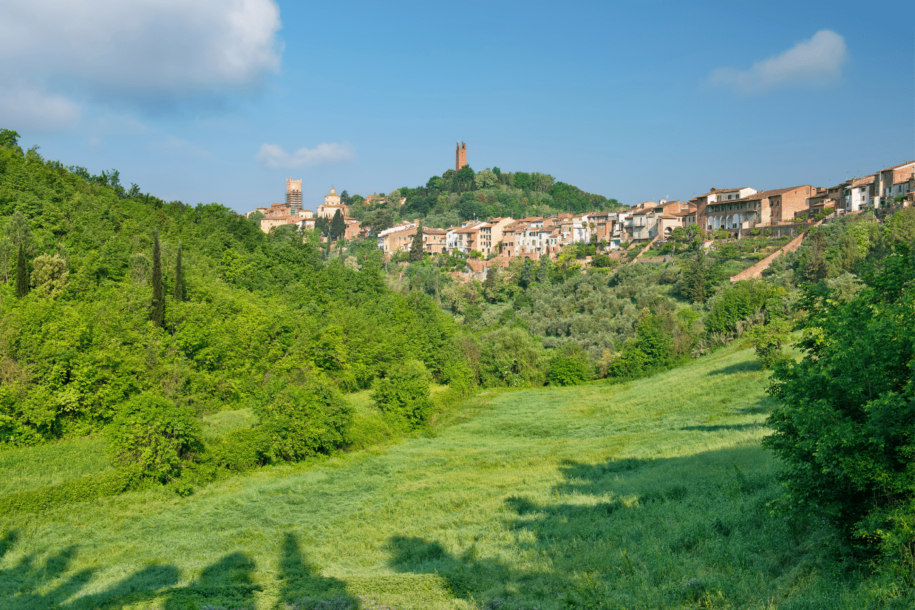Just over 15 km from Vinci is San Miniato, a small village perched on a hill with millennia of history behind it and which still preserves some ancient places that are really worth visiting. In addition to its monuments, San Minato is also famous for the delicious white truffle and it is in this village that the ancient secrets of the truffle tradition are preserved.
The original nucleus of the city dates back to the eighth century but it was nevertheless under Frederick II that it assumed a leading role by becoming the seat of the imperial vicar in Tuscany. Frederick II himself in 1240 had the Rocca built on the highest point of the city, from which you can enjoy a wonderful panorama. It was destroyed during the Second World War and faithfully rebuilt in 1958 thanks to the architect Renato Baldi and the engineer Emilio Brizzi.
Among its monuments, the Cathedral of Santa Maria Assunta and San Genesio, also known as the Cathedral of San Miniato, which overlooks the square known as Prato del Duomo, is definitely worth a visit. Dating back to the 12th century, the cathedral has a Romanesque style in its architectural lines and has a unique facade decorated with ceramics arranged in the shape of the constellations of the Ursa Major and Minor. Two very ancient buildings also overlook the same square: the Bishop’s Palace, dating back to the 13th century and which still houses the residence of the Bishop of San Miniato; and the Palazzo dei Vicari imperiali, whose construction dates back to the second half of the 12th century.
In Piazza della Repubblica there is the Palazzo del Seminario Vescovile, built starting from 1650 and completed in 1713, the year in which it was inaugurated. Outside you can admire splendid frescoes. Among the civil architectures not to be missed: Palazzo Grifoni, one of the most conspicuous examples of Tuscan civil architecture of the Renaissance period; and Palazzo Roffia, a noble late 16th century building in the Tuscan Renaissance style.
The town is full of fascinating religious buildings, including: the Church of San Domenico, perhaps the most interesting from an artistic point of view, characterized by the large portal in the center of the unfinished facade and the cloister open as a public loggia; the Sanctuary of the SS.mo Crocifisso, built between 1705 and 1718 to house an 11th century wooden crucifix considered miraculous and characterized by refined Baroque decorations; the complex of the Church and Monumental Convent of San Francesco, where you can admire a large number of valuable works of art; and the Church of Santo Stefano, in which the mosaic stained glass windows and the frescoes by Dilvo Lotti stand out.
For those who love to go around museums, the following should be mentioned: the Diocesan Museum of Sacred Art, set up in the rooms that housed the sacristies of the Church of Santa Maria Assunta and San Genesio, in which around fifty works from various parishes are kept of the Diocese; and the MuMe – Museum of Memory, a space dedicated to the testimonies of the more recent history of the community, with particular reference to the period of the Second World War.

